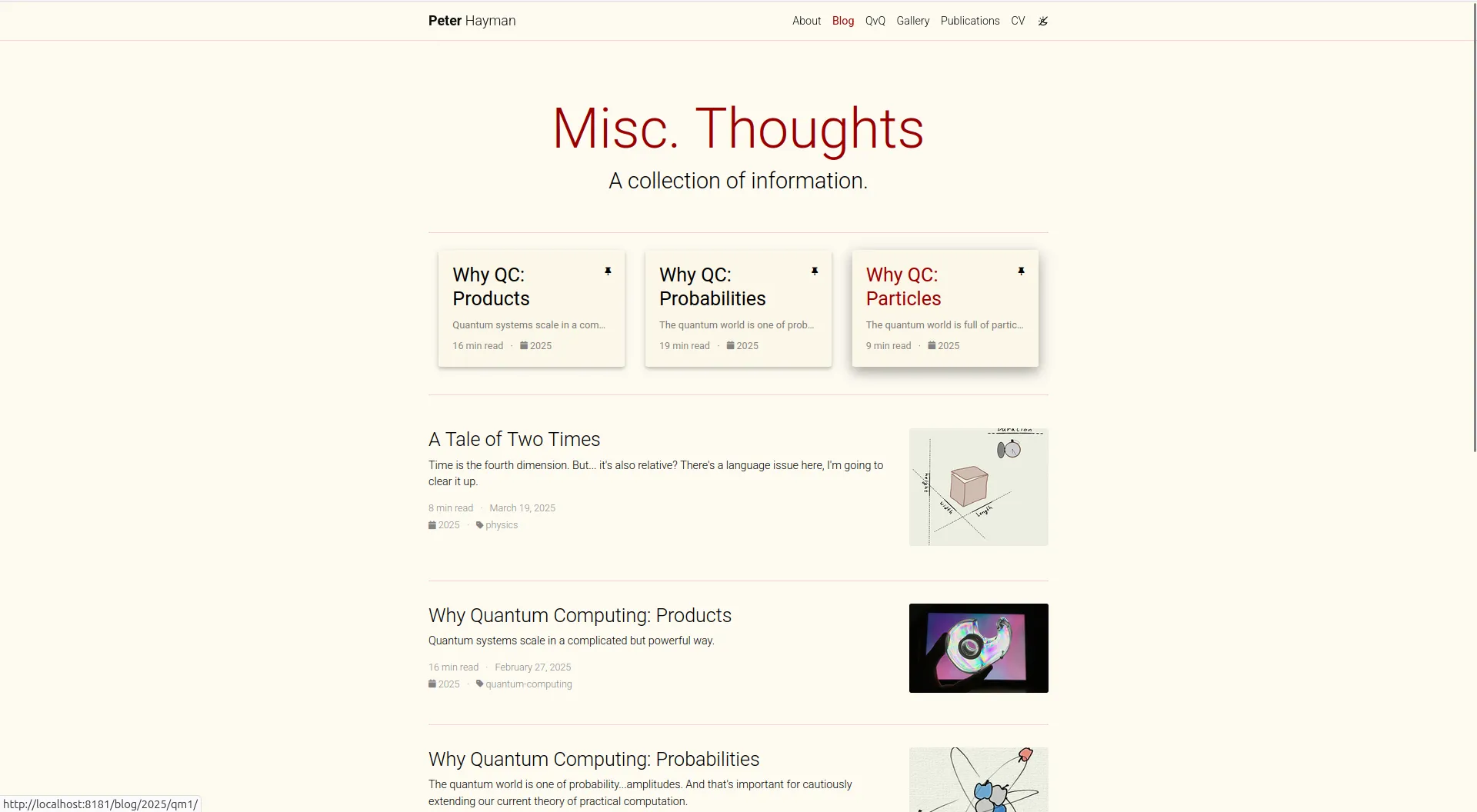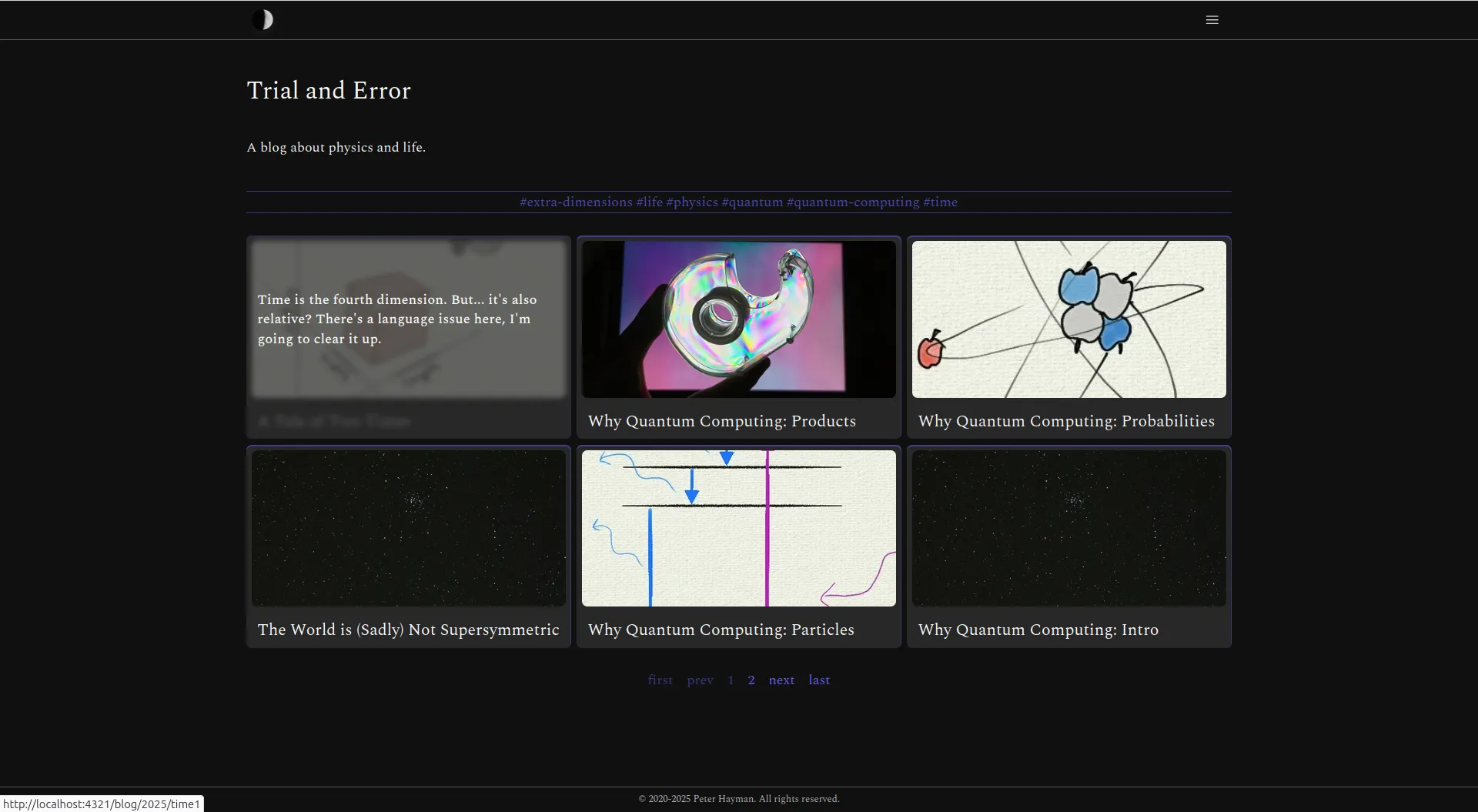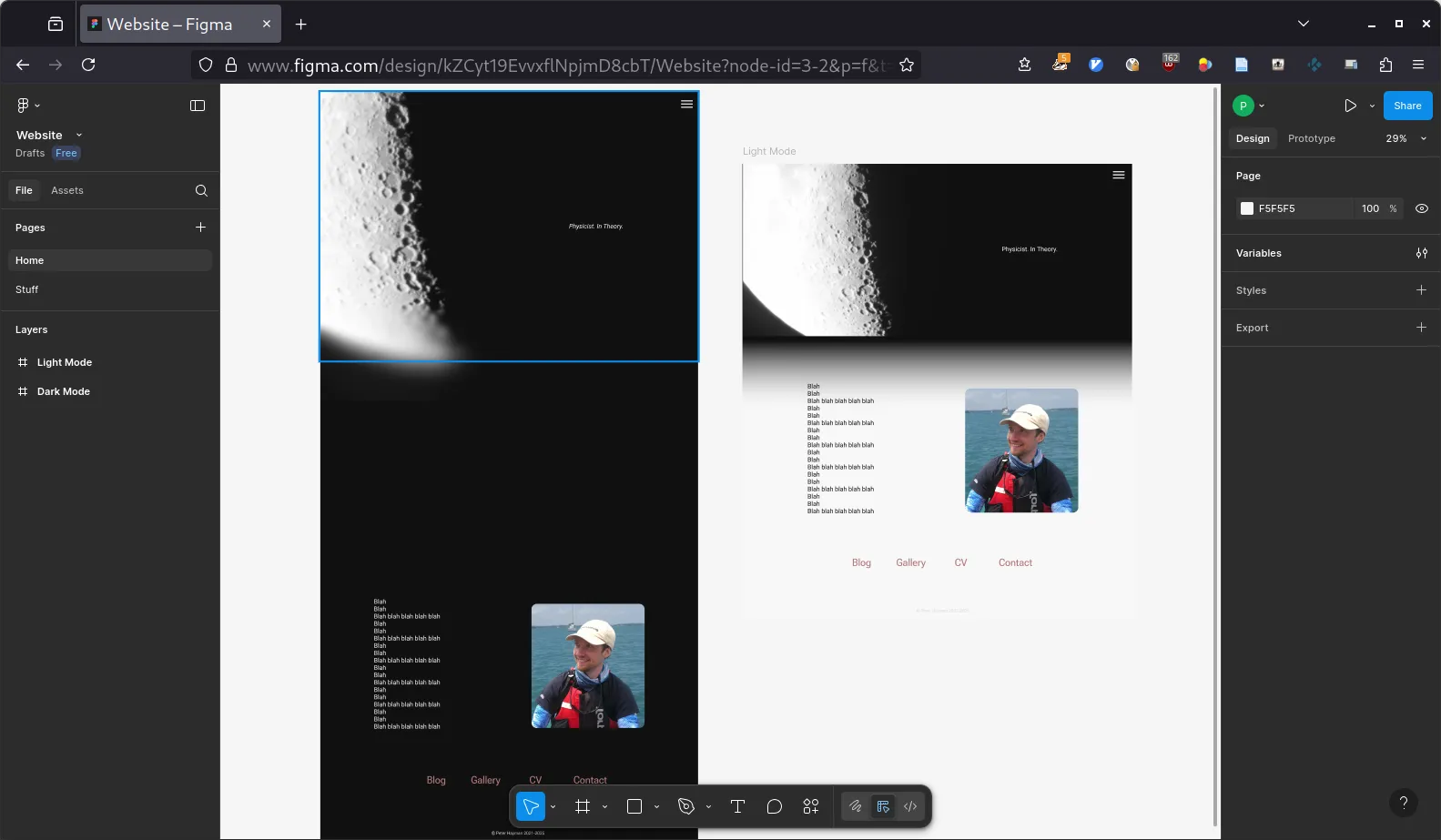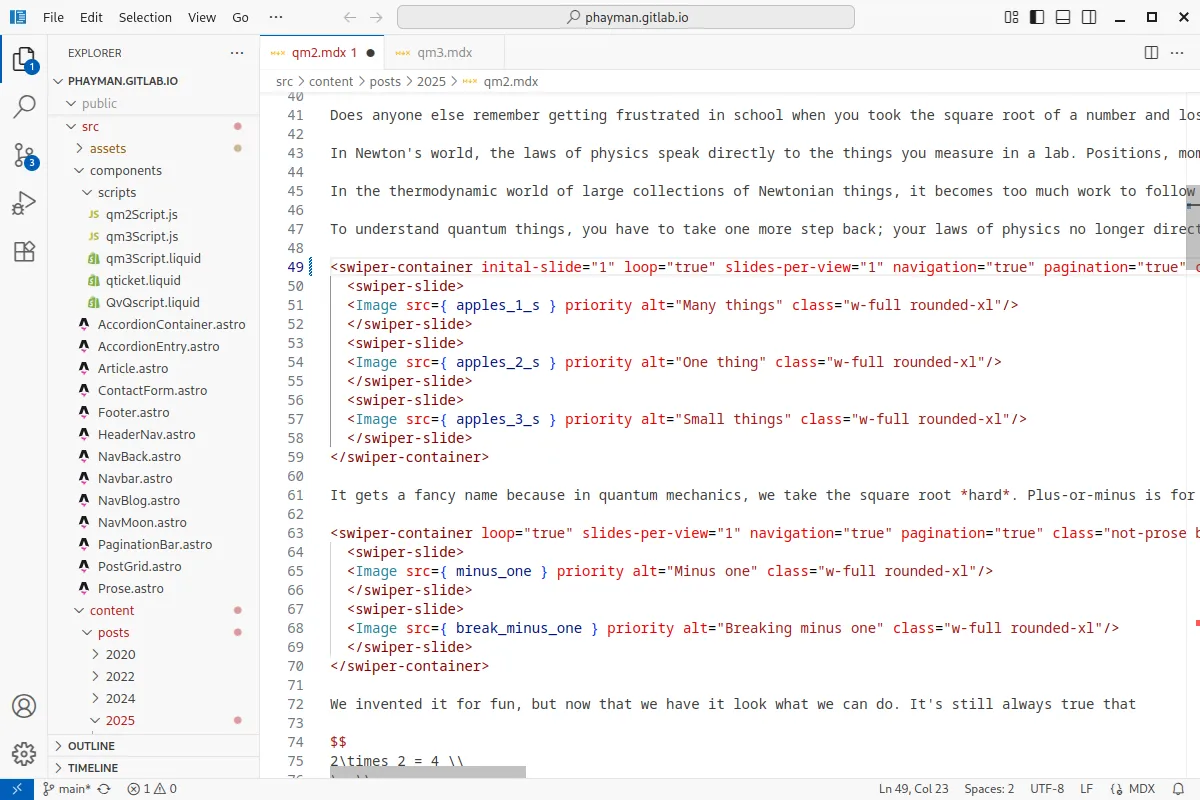Not Just a Facelift
Tue Jul 29 2025
If you’ve been here before, you might have noticed things look a little different (and if you’re new, welcome!).


In fact it’s not just superficial, I completely re-built this website from the ground up. It was an interesting process and I think it says something about me personally. Everyone likes interesting things and since you’re here you probably at least kinda like me, so here’s the story.
A Personal Website
I’ve been working on some life changes recently, and as part of that I took a fresh look at my website. I originally built it around the time I was applying for postdocs, near the end of my PhD. It felt like it would help to have a good, clean, professional, personal space on the internet, so—ever the nerd—I opted to host it myself on Gitlab and followed a wonderful template for a personal academic website.
But revisiting it now, I realize it was a very impersonal personal website. The content was about me, but it didn’t feel like me. So I went looking for a new template. And looking… and looking. But after a few weeks of frequent bursts of deep-dive template-hunting I decided I didn’t belong in one anyway, I decided it was time to follow the perfectionist’s mantra: if you want something done right,
do it yourself.
So I did. I taught myself the basics of Figma to get a rough idea of what I wanted

Then I taught myself about AstroJS to code it and whoosh, in a week I had build the new website you’re now definitely enjoying.
Phrasing it like that hides a bit about just how nitty-gritty perfectionist this project was. Let me give you a little background on how websites work: Your web browser speaks a language called HTML, in a local dialect defined by a dictionary called CSS, and when absolutely necessary it can understand some of the much more complicated Javascript. Coding in these is like writing directly on your screen and carrying your screen over to other people, it’s as direct as it gets.
My old website used a framework called Jekyll. It’s a really nifty thing, it adds a few layers on top of the raw browser language so that the author (me) can write in a much more human kind of way, like in a Word document. That makes it ideal for templating—lots of people can use the same base for their websites while easily tweaking them to their own tastes. But the one who makes the template has to navigate not just the basic browser language, but now also these extra layers, and since I needed to re-do the entire look and feel, I decided to get rid of the extra layers. That said, structuring a decent, pretty, modern website from scratch is a right pain in the derriere, so enter my little friend Astro.
Astro is a teeny little helper program that just takes care of the most tedious parts of structuring a website. It takes care of organizing my code, optimizing images, and very importantly, it lets me write things in a modular way, still at the raw code level but just focusing on this button or that card, and pasting them together when I have them individually the way I want. That way not only do I not have to worry about housekeeping, but I can also very easily re-use bits and pieces that I spent ages getting just right. There’s a bit more to it—Astro also helps me bring in external help when I need it, like formatting math or doing fancy things with pictures—but by and large that’s the point, I decided to learn to speak Web Browser to present myself and my work as authentically as possible.
But there’s an interesting corollary: it really brought into focus for me that
I’m not a programmer
No. I’m a problem solver. I actually hate programming. Look at this silent bug that tortured me for days. Look at it. There’s one letter missing.

I mean honestly…
But I need a website, I need it to be authentic, and the only way to do that is to write it myself1. I didn’t do this to add “web development” to my CV, far from it. Maintaining this will be plenty enough of that for me, thank you very much—no it just got me thinking that now I’m looking forward to the next project, the next skills and tools I’ll have to teach myself to solve a new interesting problem. This also actually leads very well into the last thing I want to point to: I’ve christened my blog
Trial and Error
When I quickly put a website together five years ago, I included the blog on a whim and appropriately title it “Miscellaneous Thoughts” because that’s really what it was. Now that I have a clearer picture of what I want to use it for (and a very long list of topics I want to explore), I decided it deserves a proper name.
Trial and Error: the commonsense name for the scientific method. More than just representing the heart of science it describes a way of life. It’s the balance between the reserved and the rash, taking calculated chances and learning from the successes and failures alike. It won’t always seem totally relevant in each post, but taken together I think (I hope) the blog itself will reflect that philosophy.
And this comes back to problem solving because the two go hand-in-hand. Trial and error is the only consistent way to solve any problem, and the motivation to solve problems gives purpose to an otherwise aimless tool.
Footnotes
-
Or obviously pay someone else, but I don’t want to support programmers. ↩